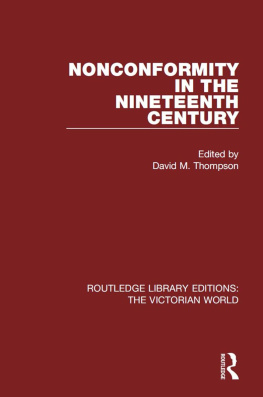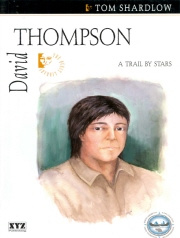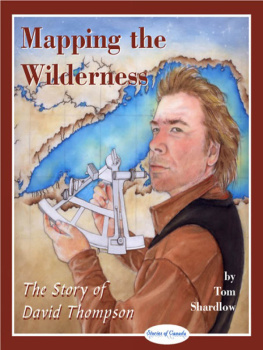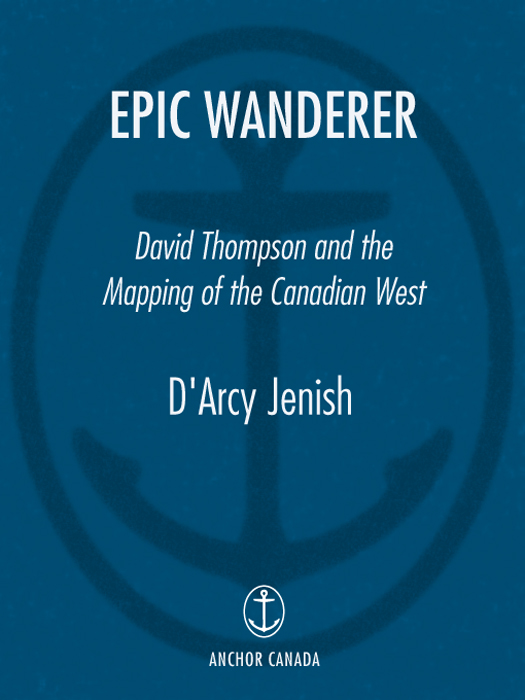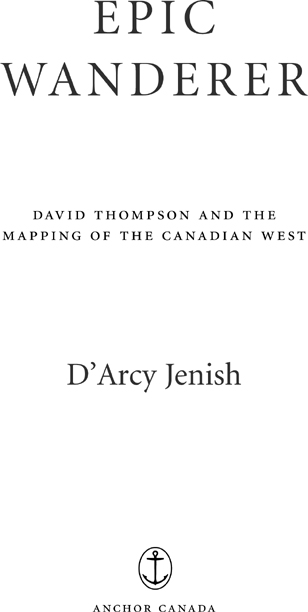Acclaim for DArcy Jenishs
EPIC
WANDERER

In Epic Wanderer, DArcy Jenish remains admirably invisible and allows the remarkable life of his subject to speak for itself. [It] is replete with fascinating detail [and] goes some way to restoring Joseph Burr Tyrrells assessment of [Thompson] as the greatest land geographer the world has produced.
Quill & Quire
DArcy Jenish has a flair for writing history for the general reader and he tells Thompsons story in a dramatic and entertaining way that keeps the pages turning. This well-fashioned account should do much to introduce a remarkable Canadian to the public at large.
Christopher Dafoe, former editor of The Beaver, in The Globe and Mail
Epic Wanderer is a gripping yarn about one mans ambition, his breathtaking adventures and the opening up of the West. Its well- researched and its heartfelt. And its a great contribution to a debate that will surely continue.
Ottawa Citizen
Thompsons story is a rich piece of the countrys heritage and DArcy Jenish has done a great service to history by not only recounting the extraordinary tale but fleshing out its enduring significance.
Calgary Herald
DArcy Jenishs work [on Thompson] is the most comprehensive and revealing to date.
Times Colonist (Victoria)
DArcy Jenish makes the flat statement that David Thompson remains one of the most remarkable figures in Canadian history and then sets out to demonstrate this view. He skilfully and quickly takes readers into this account in a stirring narrative.
Edmonton Journal
A significant contribution to western Canada biography Jenishs marvelous effort has resurrected Thompsons accomplishments as a great explorer and mapmaker.
Winnipeg Free Press
Very well written.
The Record (KitchenerWaterloo)
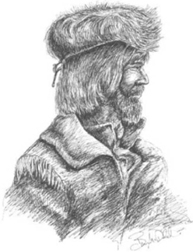
I was placed at table, between one of the Miss Ms and a singular-looking person of about fifty. He was plainly dressed, quiet, and observant. His figure was short and compact, and his black hair worn long all round, and cut square, as if by one stroke of the shears, just above the eyebrows. His complexion was of the gardeners ruddy brown, while the expression of his deeply-furrowed features was friendly and intelligent, but his cut-short nose gave him an odd look. His speech betrayed the Welshman, although he left his native hills when very young
I afterwards travelled much with him, and have now only to speak of him with great respect, or, I ought to say, with admiration
Never mind his Bunyan-like face and cropped hair; he has a very powerful mind, and a singular faculty of picture-making. He can create a wilderness and people it with warring savages, or climb the Rocky Mountains with you in a snow-storm, so clearly and palpably, that only shut your eyes and you hear the crack of the rifle, or feel the snow-flakes melt on your cheeks as he talks.
JOHN BIGSBY, PHYSICIAN AND AUTHOR,
DESCRIBING DAVID THOMPSON IN 1820.
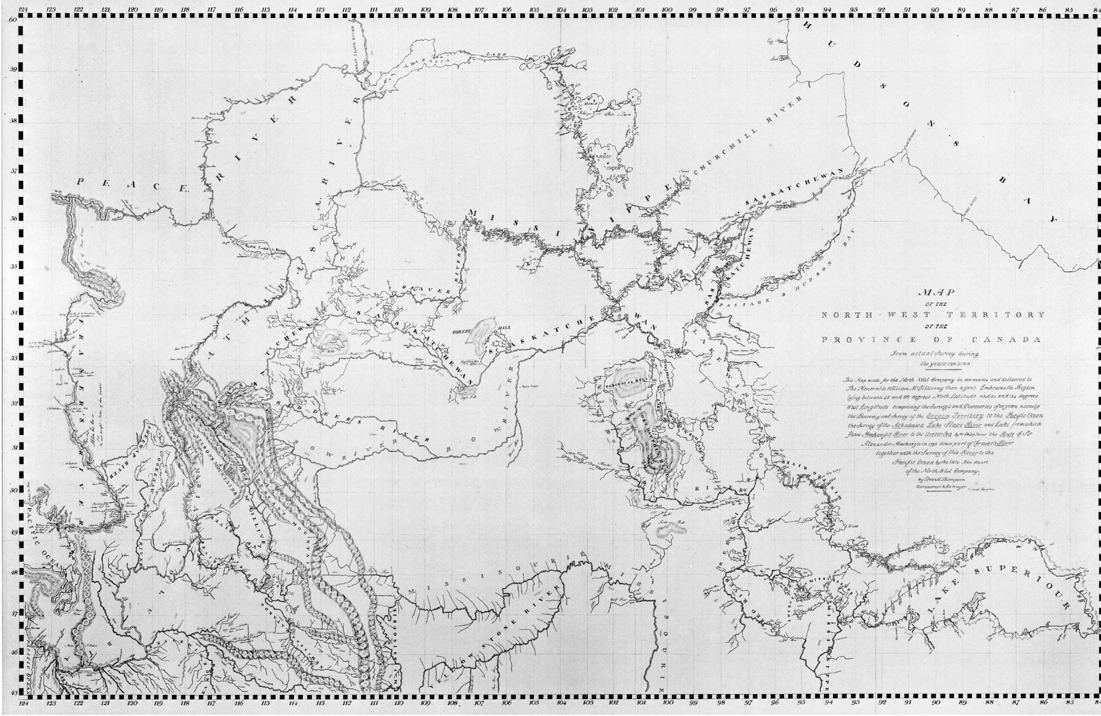
CONTENTS

PREFACE

DAVID THOMPSON IS ONE OF THE MOST REMARKABLE FIGURES IN Canadian history. His origins were humble, his career varied. He was a fur trader, an explorer, a surveyor, a mapmaker and an entrepreneur. He experienced triumph and failure, affluence and poverty, comfort and hardship. He died penniless and obscure in 1857 and remained unknown to the Canadian public until the publication, in 1916, of David Thompsons Narrative, his account of the twenty-eight years (17841812) he spent roaming the Canadian West.
Thompsons story has been told before, usually in abbreviated biographies that conveyed the basic facts but missed most of the drama. Or the focus was exclusively on his western travels. My aim here is a more complete telling, providing a more thorough account of Thompsons early years with the Hudsons Bay Co. and an examination of Thompsons career after his fur-trading days, from 1812 till his death in 1857.
In endeavouring to produce a clear and vivid portrait of the man and the times, my first source was David Thompsons Narrative, a roughly chronological work supplemented by the authors observations on the flora and fauna, the seasons and the climate, the geography and the peoples of the lands he visited. I have drawn heavily upon his largely unpublished daily journals, which are rich in facts and details hitherto unused. In the journals and the Narrative, Thompson describes several encounters with aboriginals, including conversations, and reveals an uncanny ability to capture the rhythm and vocabulary of native speech. In all his writing, Thompson was preoccupied with his work and the world around him. He rarely said anything about his wife, Charlotte, or their children, and I have avoided trying to fill this gap in the story through speculation or supposition. I also relied on the daily journals of the Hudsons Bay Co. posts where he served, which shed invaluable light on the youthful Thompson. For the sake of authenticity, I have retained the spelling and punctuation found in the Hudsons Bay Co. journals, as well as those of Thompson. Finally, I consulted the published works of his contemporaries and, of course, secondary analyses of major historical events that occurred during his lifetime.
Thompsons life, fascinating in its own right, provides us with an unparalleled view of a tumultuous and pivotal era in Canadian history. He served on both sides of the desperate, cutthroat battle for supremacy between the Hudsons Bay Co. and its Montreal-based rival, the North West Co. This was more than just an average commercial rivalry. It was a fight between an imperial and a colonial enterprise, between an old and a new way of organizing a business.
The Hudsons Bay Co. was controlled by distant shareholders and run by men who were essentially branch managers. The North West Co. was controlled by Montreal merchants and run by ordinary traders who had become partners, or shareholders. Thompson flourished among the dynamic and entrepreneurial NorWesters. He and a handful of others made the company North Americas first transcontinental enterprise. They also provided an inspiring example of what English, French and aboriginals could accomplish when they worked together.
Thompson also takes us into a time when the dynamics between whites and aboriginals were very different than they have been for most of the past two centuries. When Thompson worked in the West, natives were the majority. White men operated at the margins of a world dominated by First Nations. As such, many tradersand Thompson was certainly one of themwere free of the bigotry and prejudice that arrived with the settlers and so poisoned relations between the races.


